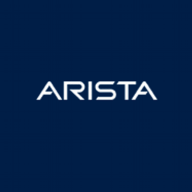

Cisco Secure Network Analytics and Arista NDR compete in the network security category. Based on user reviews, Cisco seems to have the upper hand in scalability and integration capabilities, while Arista stands out in AI-driven detection and real-time analysis.
Features: Cisco Secure Network Analytics offers advanced threat detection, comprehensive visibility across network traffic, and strong integration capabilities. Arista NDR provides AI-driven detection, quick response times, and real-time analysis.
Room for Improvement: Cisco Secure Network Analytics could improve incident response automation, third-party system integration, and usability. Arista NDR users suggest enhancements in documentation, support for additional protocols, and more extensive training materials.
Ease of Deployment and Customer Service: Cisco Secure Network Analytics generally receives positive feedback for its deployment model and customer service, though some find the initial setup complex. Arista NDR is praised for straightforward deployment and responsive customer service.
Pricing and ROI: Cisco Secure Network Analytics is perceived as expensive, but users find the cost justified by robust features and high ROI. Arista NDR offers competitive pricing and positive ROI, highlighting its cost-effectiveness.
| Product | Market Share (%) |
|---|---|
| Cisco Secure Network Analytics | 13.5% |
| Arista NDR | 7.0% |
| Other | 79.5% |

| Company Size | Count |
|---|---|
| Small Business | 5 |
| Midsize Enterprise | 2 |
| Large Enterprise | 7 |
| Company Size | Count |
|---|---|
| Small Business | 11 |
| Midsize Enterprise | 7 |
| Large Enterprise | 52 |
Arista NDR (formerly Awake Security) is the only advanced network detection and response company that delivers answers, not alerts. By combining artificial intelligence with human expertise, Arista NDR hunts for both insider and external attacker behaviors, while providing autonomous triage and response with full forensics across traditional, IoT, and cloud networks. Arista NDR delivers continuous diagnostics for the entire enterprise threat landscape, processes countless network data points, senses abnormalities or threats, and reacts if necessary—all in a matter of seconds. The Arista NDP platform stands out from traditional security because it is designed to mimic the human brain. It recognizes malicious intent and learns over time, giving defenders greater visibility and insight into what threats exist and how to respond to them.
The Advent of Advanced Network Detection and Response & Why it Matters
Cisco Secure Network Analytics is a highly effective network traffic analysis (NTA) solution that enables users to find threats in their network traffic even if those threats are encrypted. It turns an organization’s network telemetry into a tool that creates a complete field of vision for the organization’s administrators. Users can find threats that may have infiltrated their systems and stop them before they can do irreparable harm.
Cisco Secure Network Analytics Benefits
A few ways that organizations can benefit by choosing to deploy Cisco Secure Network Analytics include:
Cisco Secure Network Analytics Features
Some of the many features that Cisco Secure Network Analytics offers include:
Reviews from Real Users
Cisco Secure Network Analytics is a solution that stands out even when compared to many other comparable products. Two major advantages that it offers are the way that it enables users to define the threshold at which the solution will issue a warning to administrators and the predefined alerts that it offers straight out of the box.
Gerald J., the information technology operations supervisor at Aboitiz Equity Ventures, Inc., writes, “StealthWatch lets me see the ports running in and out and the country. It has excellent reporting, telemetry, and artificial intelligence features. With the telemetry, I can set thresholds to detect sudden changes and the alarms go through the PLC parts. I can see all the ports running on that trunk.”
A senior security engineer at a tech services company, says, “Cisco Stealthwatch has predefined alerts for different types of security issues that might happen in the network. Whether it's PCs or servers that are used for botnets or Bitcoin mining we receive the alerts automatically. This functionality is what we receive from the solution out of the box.”
We monitor all Network Traffic Analysis (NTA) reviews to prevent fraudulent reviews and keep review quality high. We do not post reviews by company employees or direct competitors. We validate each review for authenticity via cross-reference with LinkedIn, and personal follow-up with the reviewer when necessary.